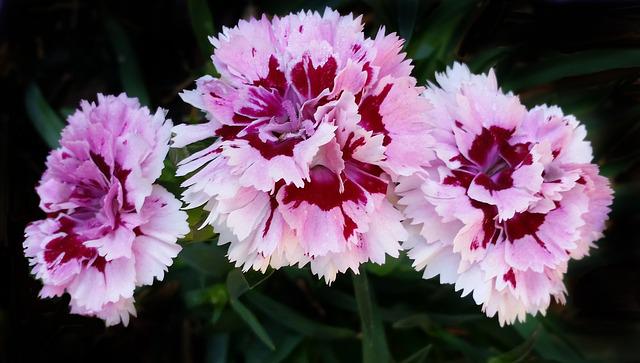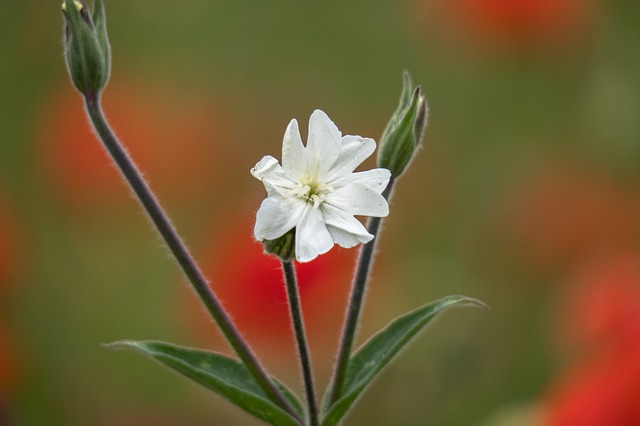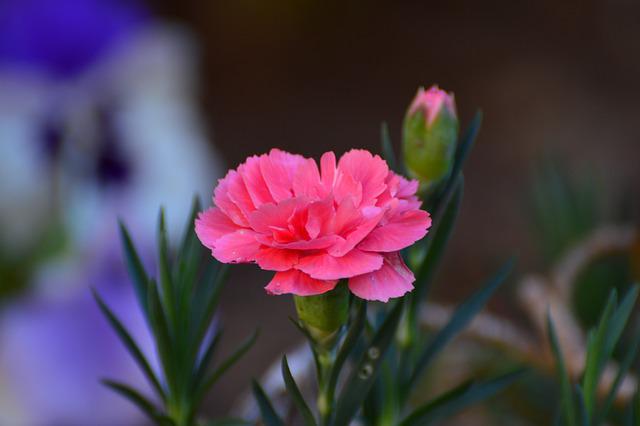Carnation Dying: 7 Reasons Why Your Carnation is Dying

If you’ve noticed that your carnation is wilting and dying, there are likely seven reasons. This article will outline the most common causes of carnation death. From over-watering to diseases, we’ll cover everything you need to know to keep your carnations fresh and thriving!
Table of Contents
Reasons Why Your Carnation is Dying
Overwatering
Carnation plants need good drainage because too much water kills the roots, which causes the leaves to turn brown and die. Fungal and bacterial infections need water to spread and hurt plants, so giving carnations the right amount of water is critical to stopping the rots and wilts that kill them. This plant only needs extra water when it’s scorched. Before you water carnations, you should always check how wet the soil is. You can do this by sticking your finger in the soil to see if it’s dry and looking for signs of wilting, which can mean a plant needs water.
Underwatering
If your carnation plant gets less water than it needs, the leaves will start to die and become stunted. If this happens, you’ll need to water your carnation more often and ensure the soil has enough moisture. Try watering from above with a hose directed toward the ground so any excess water runoff goes away quickly.
Not Enough Sunlight Exposure
Carnation leaves turn yellow and die when there’s not enough light. If your carnation is growing in a shady spot, move it to a brighter location or give it some sun exposure for the day. All plants need sunlight to thrive, and carnations are no exception. This means that if you try to cultivate these flowers in a shady area, they will eventually perish because they cannot get enough light to complete their photosynthesis. Plant them where they’ll be shaded in the afternoon for optimal growth.
Phosphorus Deficiency

Many gardeners add phosphorus-rich fertilizer to their plants every time they water them, but this isn’t necessary with carnations. Just make sure that the soil contains plenty of nitrogen as well. A deficiency in either element can cause leaf yellowing and death.
Not Fertilizing Correctly
Adding nitrogen to the soil will help keep your carnation healthy and flowering. If you’re not fertilizing your plant each time you water it, check the product label for instructions on how much nitrogen to add. Most garden centers have various nutrient-rich products available, so don’t hesitate to ask if you need help choosing the right one.
Dust
These plants will not survive if they are grown in a dusty environment. For plants, dust-blocking pores necessary for carrying out biological reactions mean death.
Diseases
Basal Rot
Fusarium wilt, also called “basal rot,” is a disease caused by fungi that affect carnations and other herbaceous plants. The fungal infection makes the leaves wilt and turns yellow. Infected leaves eventually turn brown and die, starting with the lower leaves. Young plants that get fusarium often wilt and die. Control is based on good hygiene and cultural norms. Don’t overwater or fertilize too much, and ensure good drainage.
Root Rot in Armillaria

Armillaria root rot, also called oak root fungus, can attack woody and herbaceous perennials. The fungus attacks the cambial tissue of a plant and grows through the plant’s soft tissues. Above ground, the plant has crooked, discolored stems, killing the whole plant. Armillaria root rot can be stopped by ensuring the soil stays moist and has good drainage. Before planting new carnations, you should eliminate the old plant’s roots and other parts.
Soft Rots from Bacteria
Bacterial soft rots include leaf spots, wilts, and blights. They are caused by bacteria and affect many plants, including carnations. When bacteria that cause soft rot get into plant tissues, they turn brown, smell bad, and get soft. The stems also start to die near the soil. Symptoms include wet spots on stems, flowers, and leaves that get bigger and turn black or dark grey. Stems can get spots called cankers. Bacterial soft rots can lead to vascular wilt, making plant parts above ground wilt, droop, turn yellow, and die. Bacterial soft rots can be stopped by not watering plants from above, ensuring good drainage, and not hurting plants.
